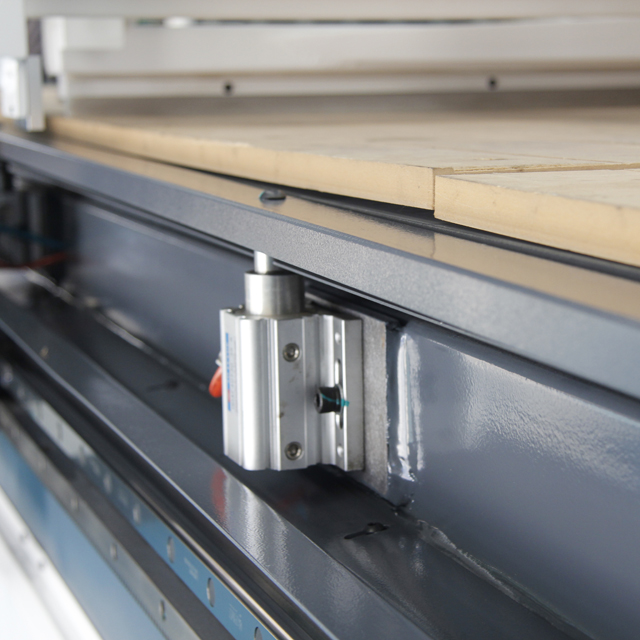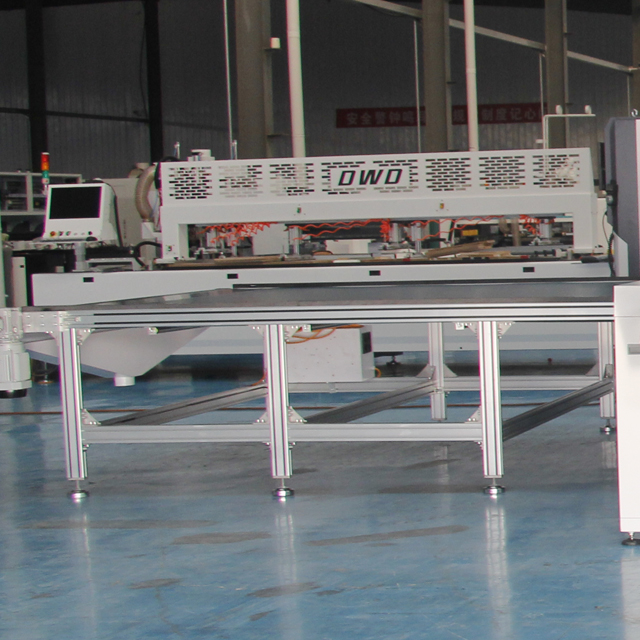close
Choose Your Site
Global
Social Media

Views: 0 Author: Site Editor Publish Time: 2025-07-22 Origin: Site
Plywood might seem simple, but cutting it cleanly and efficiently with a CNC router requires precision, skill, and the right bit. Did you know that using the wrong bit could ruin your cabinet panels or leave unsightly tear-outs along the grain? If you're aiming for flawless results in cabinet making or any other plywood-based project, you're in the right place.
Choosing the best CNC router bits for plywood isn't just about brand or cost. It's about performance, longevity, and suitability for the job. In this post, we'll explore how to choose the perfect bit for cutting plywood, especially for cabinet making CNC router applications. We'll analyze different bit types, their strengths and weaknesses, and help you understand how to get the cleanest, most efficient cuts every time.
Plywood is made by layering thin sheets of wood veneer, each glued at alternating angles. This cross-grain structure makes plywood strong and stable but also prone to tear-out and fraying when cut improperly. That’s why cabinet making CNC router operations must be extra cautious in bit selection and cutting parameters.
Here are the main issues you may face:
Tear-out on top or bottom surface
Bit dulling due to glue content
Burning from excessive friction
Chipping along the grain
Heat buildup reducing tool life
So, what's the solution? Selecting the right router bit tailored for plywood is step one.

Each bit has a job. Here are the main ones used in cabinet making CNC router operations:
Structure: Flat cutting edge, no spiral.
Performance: Moderate cut quality. Minimal lifting or pressing action.
Best Use: All-purpose cutting for hobbyists or simple grooves.
Limitation: Poor chip evacuation, may cause burning without vacuum support.
Structure: Spirals pull chips up.
Performance: Excellent chip evacuation. Clean bottom surface.
Best Use: Through cuts where bottom finish is important.
Limitation: Can cause tear-out on the top layer.
Structure: Spirals push chips down.
Performance: Very clean top surface, less fraying.
Best Use: Pocket cuts, dados, where top surface needs to look sharp.
Limitation: Poor chip evacuation; risk of overheating.
Structure: Hybrid of upcut at tip, downcut at top.
Performance: Clean top and bottom edges.
Best Use: Full-depth cuts for cabinet panels or doors.
Limitation: Higher cost; depth must reach beyond upcut zone.
Structure: Tapered shank with rounded nose.
Performance: Great for 3D contouring.
Best Use: Decorative cabinet fronts or engraving.
Structure: Angled profile.
Performance: Sharp and decorative cuts.
Best Use: Panel decorations, edge designs, engraving logos.

Router bit material and coating impact performance just as much as shape.
| Bit Material | Durability | Best Use |
|---|---|---|
| High-Speed Steel (HSS) | Low | Light-duty cuts |
| Solid Carbide | High | Frequent use on plywood |
| Carbide-Tipped | Medium | Budget option for occasional use |
| PCD (Polycrystalline Diamond) | Very High | Industrial use only |
nACo Coated Bits (nano-composite) are popular for high-end cabinet making CNC router setups. They offer:
Lower friction
Better heat resistance
Longer tool life
Smoother surface finishes
Flute count affects chip load, surface finish, and feed rate. Here's a quick breakdown:
| Flute Count | Advantages | Use Case |
|---|---|---|
| 1-Flute | Best chip clearance, fastest cutting | Soft woods, roughing |
| 2-Flute | Good balance of speed & finish | General plywood cuts |
| 3-Flute | Finer finish, slower cut | Decorative panels |
| 4+ Flutes | Smoothest finish, low feed | Final pass finishing |
In cabinet making, 2 or 3 flutes are commonly used to balance edge quality and productivity.
Finding the right speed and feed ensures longevity and clean results. Here's a sample table:
| Bit Type | RPM | Feed Rate (ipm) | Pass Depth |
|---|---|---|---|
| Upcut Spiral | 17,000 | 75 | 1/4" |
| Downcut Spiral | 17,000 | 50 | 1/4" |
| Compression | 17,000 | 60 | Full-depth or 2-pass |
| Straight Bit | 16,000 | 55 | 1/4" |
Note: Adjust these values based on your spindle HP and rigidity.
Use these best practices to achieve better results:
Secure Material Well: Prevents movement or vibration.
Use a Sacrificial Board: Clean bottom edges.
Ramp Into Cuts: Reduce tool shock.
Keep Bits Sharp: Dull bits burn plywood.
Vacuum Assist: Avoid chip packing and overheat.
Avoid Climb Cutting on Final Pass: Finish conventional for smooth edge.
Let’s map specific bit types to common cabinetmaking tasks:
| Task | Recommended Bit | Reason |
|---|---|---|
| Cutting Cabinet Panels | Compression Bit | Clean top & bottom finish |
| Engraving Logos | V-Groove Bit | Precise angled cuts |
| Decorative Fronts | Tapered Ball Nose | Smooth 3D contours |
| Joinery (Dados/Pockets) | Downcut Bit | Clean top surface |
| Rough Cuts | Upcut Spiral | Fast material removal |
Every cabinet making CNC router setup benefits from keeping a variety of these bits on hand.
DWD understands what cabinet makers need. That’s why our Cabinet making CNC router systems are optimized for precision routing with a wide variety of supported bits. Whether you're cutting decorative fronts, full cabinet panels, or complex joinery, DWD machines and tooling ensure you get industry-grade finishes without excessive tool wear.
Cutting plywood cleanly is more than just spinning a bit through a board. It takes thoughtful selection of router bits, careful control of speed and feed, and a firm understanding of the material’s layered structure. The best bit depends on your job — whether you need speed, detail, or flawless surfaces.
For businesses looking to elevate their craftsmanship, DWD’s CNC solutions deliver on every front. Our machines are built for professional cabinet making CNC router applications, ensuring precision, durability, and smooth finishes in every cut.
A: Compression bits combine both upcut and downcut actions, preventing tear-out on both the top and bottom veneer layers of plywood.
A: Yes, DWD machines are designed to cut not just plywood, but also MDF, hardwood, plastic, and composites with the right bits.
A: This depends on usage. In cabinet making CNC router applications, bits should be replaced once edge quality drops or burning occurs.
A: Absolutely. We offer feedrate calculators, tool selection guides, and expert assistance to help you choose the right bit for your application.
A: Yes. nACo-coated bits last longer, cut cleaner, and handle heat better—ideal for high-speed or long-run cabinet production.
Copyright 2022 DWD MECHATRONICS CO.,LTD
Sitemap |Technology by leadong.com